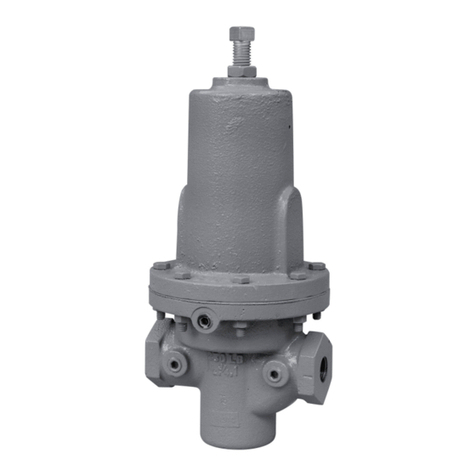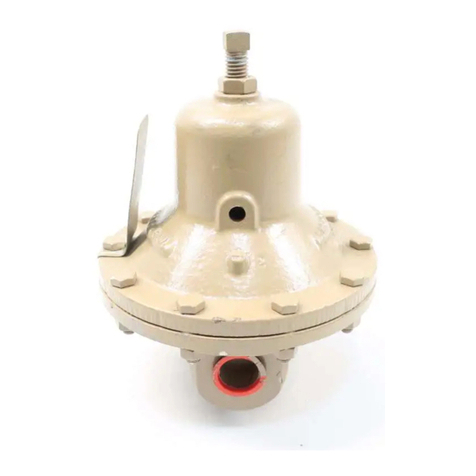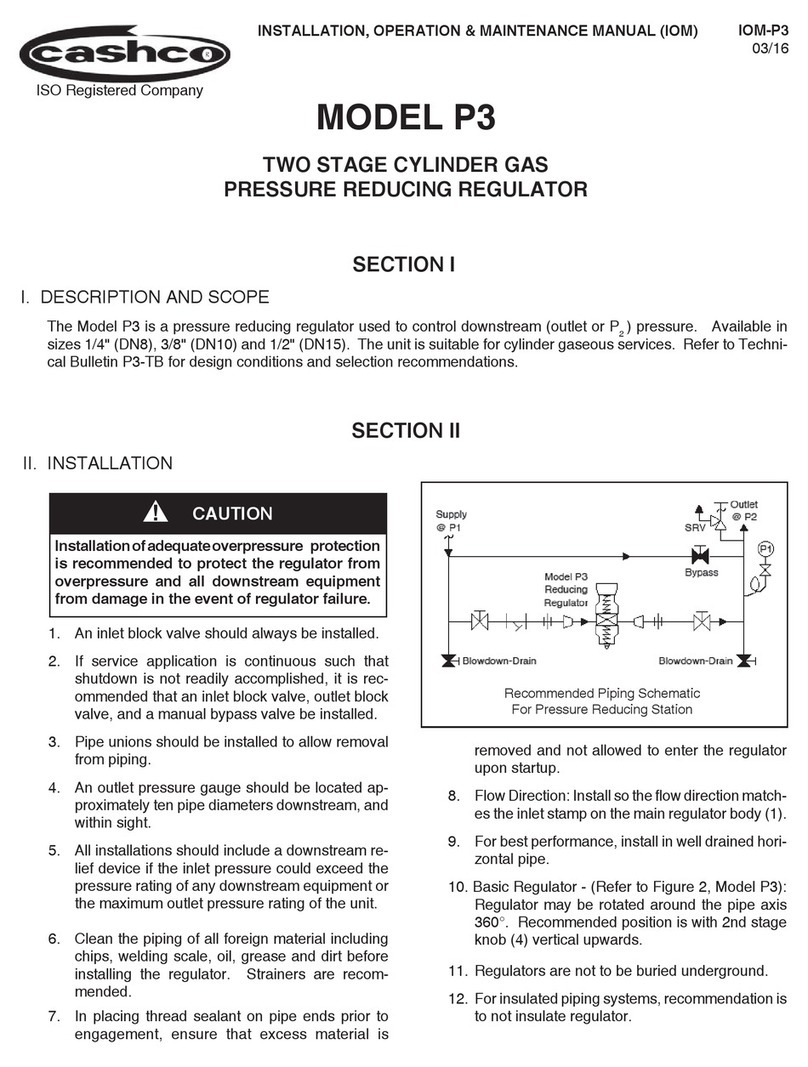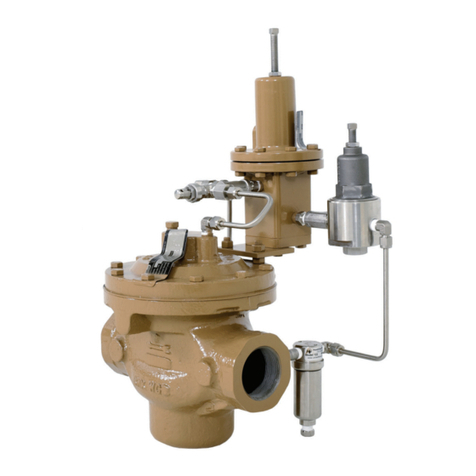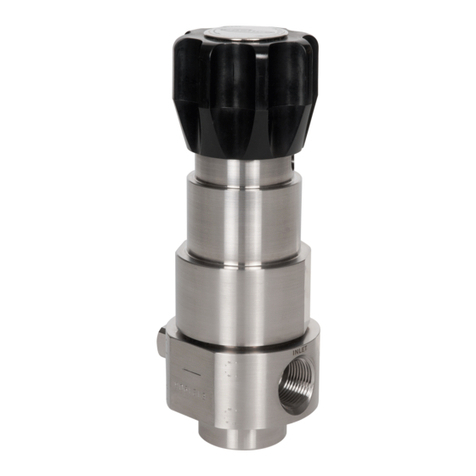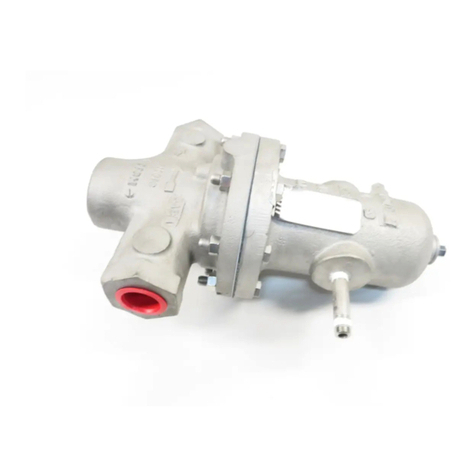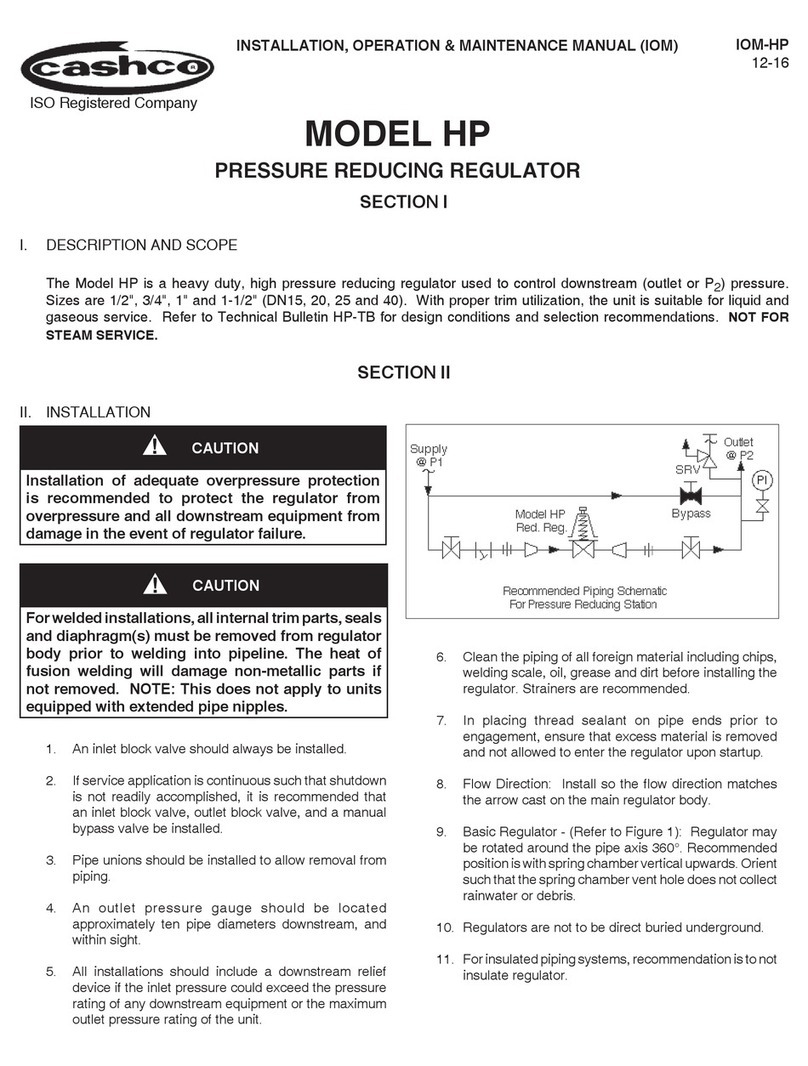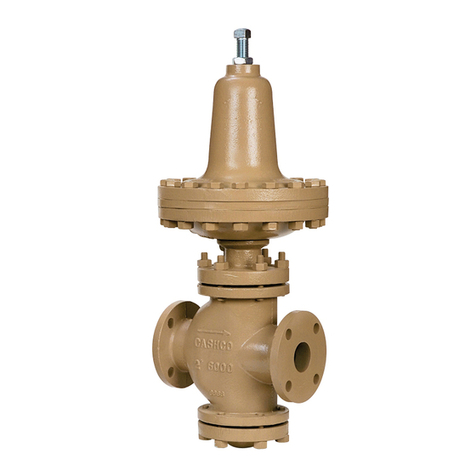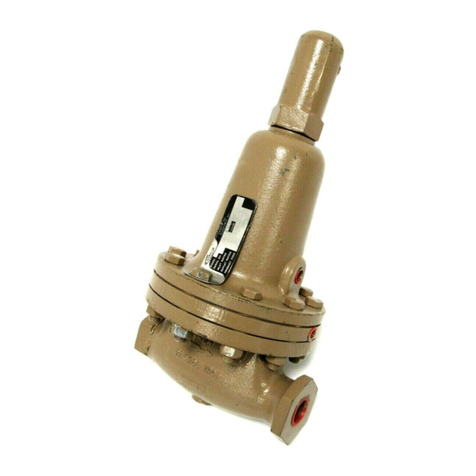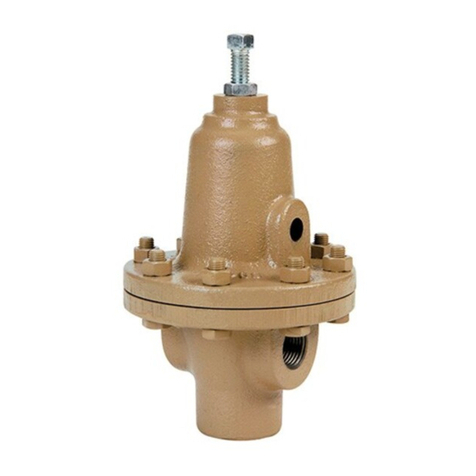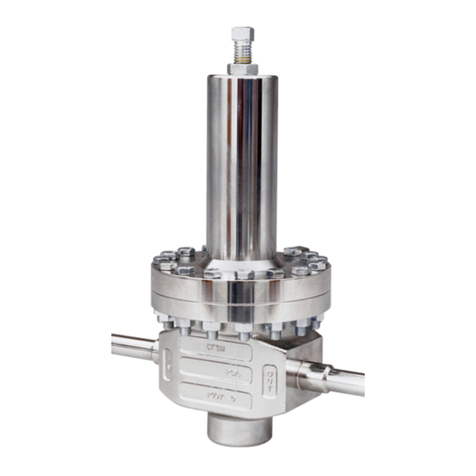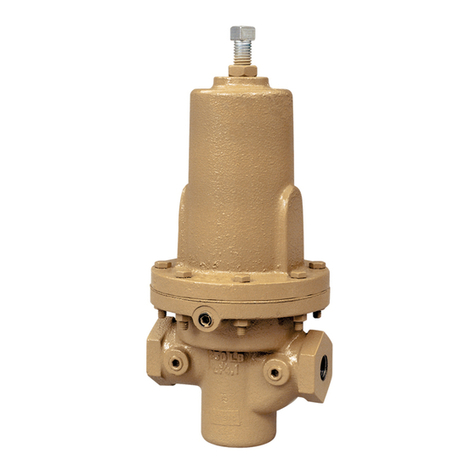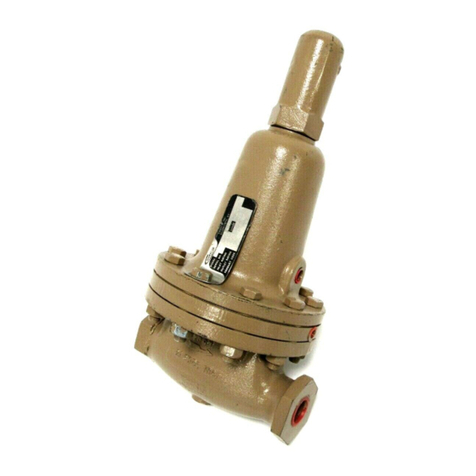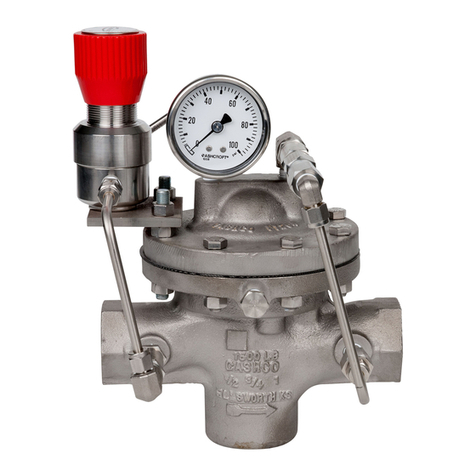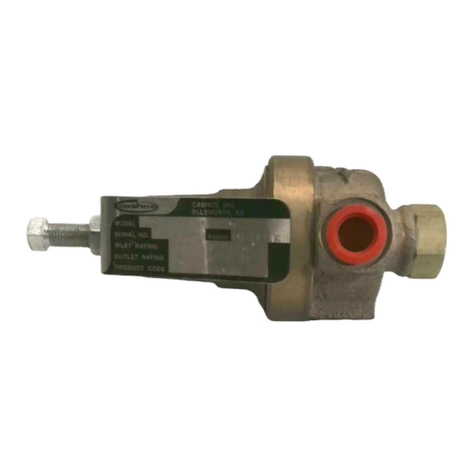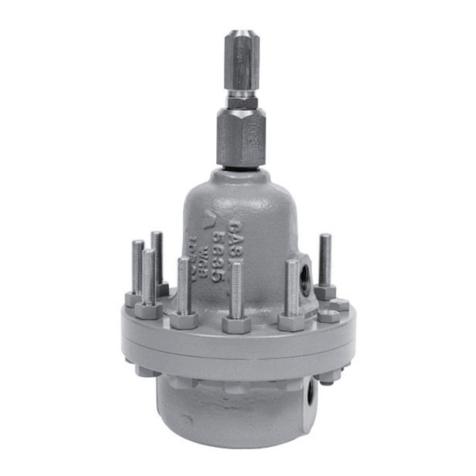
IOM-1164
2
9. Regulator may be installed in a vertical or horizontal
pipe. If it is a steam system, assure the piping is
properly trapped and oriented.
10. Regulator may be rotated around the pipe axis
360°. Recommended positions are with spring
chamber vertical upwards, or horizontal. Orient
such that the spring chamber vent hole does not
collect rainwater or debris.
11. Regulators are not to be direct buried under-
ground.
12. For insulated piping systems, recommendation is
to not insulate regulator.
13. Spring Chamber Vent Tap - Option 1164-25: 1/4"
NPT Vent. Leave connection vented to atmosphere
or pipe to outside or sump (the later if fluid through
valve is toxic or could present a hazard) depending
on the application and the controlled fluid.
1. Movement occurs as pressure variations register
on the diaphragm. The registering pressure is the
inlet, P1or upstream pressure. The range spring
opposes diaphragm movement. As inlet pressure
drops, the range spring pushes the diaphragm
down, closing the port; as inlet pressure increases,
the diaphragm pushes up and the port opens.
SECTION IV
IV. STARTUP:
SECTION III
III. PRINCIPLE OF OPERATION
1. Start with the block valves closed. A bypass valve
may be used to maintain system pressure without
changing the following steps.
2. Relax the range spring by turning the adjusting
screw counterclockwise (CCW) a minimum of
three (3) full revolutions. This reduces the inlet
(upstream) pressure set point.
3. If it is a “hot” piping system, and equipped with a
bypass valve, slowly open the bypass valve to pre-
heat the system piping and to allow slow expansion
of the piping. Assure proper steam trap operation
if installed. Closely monitor inlet (upstream) pres-
sure, via gauge, to assure not over-pressurizing.
NOTE: If no bypass valve is installed, extra cau-
tion should be used in starting up a cold system;
i.e. do everything slowly.
4. Crack open the inlet (upstream) block valve.
5. Slowly open the outlet (downstream) block valve
observing the inlet (upstream) pressure gauge.
Determine if the regulator is flowing. If not, slowly
rotate the regulator adjusting screw counter-
clockwise (CCW) until flow begins.
6. Continue to slowly open the outlet (downstream)
block valve until fully open.
7. Observing the inlet (upstream) pressure gauge,
rotate the adjusting screw clockwise (CW) slowly
until the inlet pressure begins to rise. Rotate CW
until the desired setpoint is reached.
8. Continue to slowly open the inlet (upstream) block
valve. If the inlet (upstream) pressure exceeds
the desired setpoint pressure, rotate the adjusting
screw CCW until the pressure decreases.
9. When flow is established steady enough that both
the outlet and inlet block valves are fully open, begin
to slowly close the bypass valve if installed.
10. Develop system flow to a level near its expected
normal rate, and reset the regulator setpoint by
turning the adjusting screw CW to increase inlet
pressure, or CCW to reduce inlet pressure.
11. Reduce system flow to a minimum level and
observe setpoint. Inlet pressure will rise from the
setpoint of Step 9. (Ensure that this rise does not
exceed the stated upper limit of the range spring by
greater than 50%; i.e. 30-80 psig (2.07-5.52 Barg)
range spring, at maximum flow the inlet pressure
should not exceed 1.5 x 80 psig (5.6 Barg), or 120
psig (8.3 Barg). If it does, consult factory.)
12. Increase flow to maximum level if possible. Inlet
(upstream or P1) pressure should fall off. Readjust
setpoint as necessary at the normal flow rate.
2. Acomplete diaphragm failure may cause the valve
to fail closed. A cracked metal diaphragm will leak
fluid thru the vent hole of the spring chamber, but
will continue to operate.
CAUTION
For welded installations, all internal trim parts, seals and
diaphragm(s)mustberemovedfromregulatorbodypriorto
welding into pipeline. The heat of fusion welding will dam-
age non-metallic parts if not removed. NOTE: This does
not apply to units equipped with extended pipe nipples.
